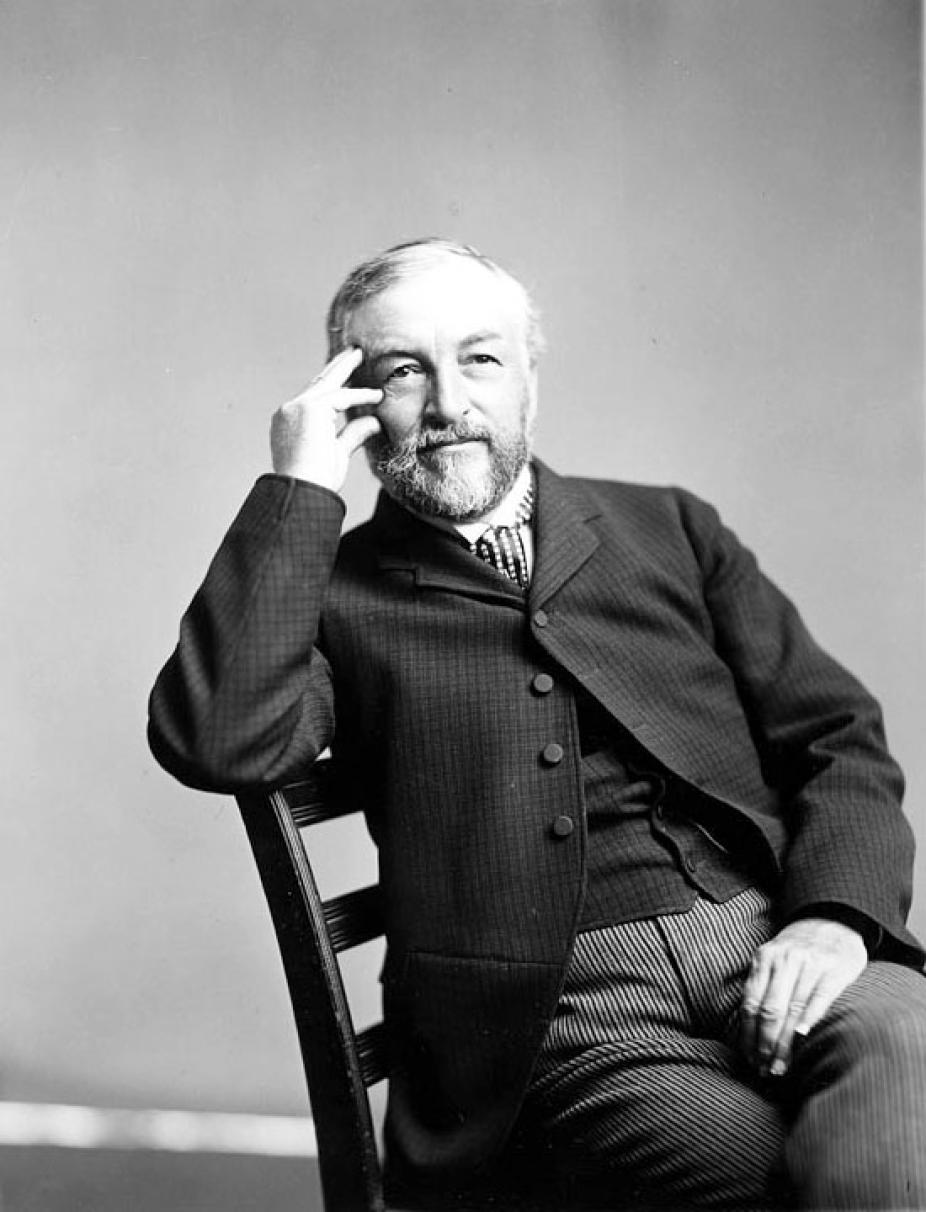Samuel P. Langley (1834–1906)
Samuel Pierpont Langley was born in Roxbury, Massachusetts, in 1834. Langley's formal education ended with his graduation from high school, and he was largely self-taught in astronomy. After working as an assistant astronomer at Harvard College Observatory for a year or so, in 1866 he took an astronomer position at the U.S. Naval Academy. However, he chose to move on again the next year, to become director of the then newly endowed Allegheny Observatory of the Western University of Pennsylvania. In 1887 he left Allegheny Observatory (in much better shape than he found it) to become assistant secretary of the Smithsonian Institution in Washington DC, where he successfully pushed for the founding of what is now known as the Smithsonian Astrophysical Observatory, of which Langley became director in 1890.

Portrait of Samuel P. Langley.
Wikipedia
Today Langley is primarily remembered for his pioneering work on the measurement of the solar constant, and equally pioneering studies of the infrared portion of the solar spectrum. By 1880 Langley had perfected his bolometer. This instrument was based on the already well-known property of metals, namely the fact that their electrical resistivity increases with temperature. Langley's bolometer was so sensitive that it could detect thermal radiation from a cow a quarter of a mile away. His first "map" of the infrared portion of the solar spectrum was published in 1894. In 1895, badly in need of additional manpower due to ever increasing administrative duties, Langley hired Charles Greeley Abbot (1872–1973), then a 23-year-old graduate student at the Massachusetts Institute of Technology. Abbot became equally fascinated with the solar constant problem, and carried out Langley's program with flying colors for the following half century.
In 1888 Langley published a beautifully written popular science book entitled "The New Astronomy", with a strong emphasis on recent developments in Solar Physics, which gained a very broad readership and did much to popularize the rising science of astrophysics.
Starting in 1886, Langley became increasingly fascinated with the prospect of heavier-than-air flight. Once again self-taught in aerodynamical principles, he launched his first steam engine-powered unmanned aircraft in 1896. His success, while limited, was sufficient to secure steady funding from the War Department to pursue his aircraft development efforts. In October 1903 his first manned aircraft was launched by catapult into the Potomac river. The young pilot, Charles Manley, was sufficiently thrilled by the experience to try again less than three months later, unfortunately with much the same results. This last public and highly publicized failure was particularly hard on Langley, especially since a mere nine days later Wilbur and Orville Wright flew themselves off the ground and into history.
Langley was a member of the US National Academy of Sciences, and was for a time president of the American Association for the Advancement of Science. He was awarded both the Rumford Medal by the Royal Society of London and the Draper Medal of the National Academy of Sciences in 1886, and the Janssen Prize of the Paris Academy in 1893. In 1905 Langley suffered a stroke that left him partly paralyzed and in the care of his sister. He died of a second stroke in February 1906.
Bibliography
Eddy, J.A. 1990, Journal for the History of Astronomy, 21, 111–120.
Hufbauer, K. 1991, Exploring the Sun, Baltimore: The Johns Hopkins University Press.